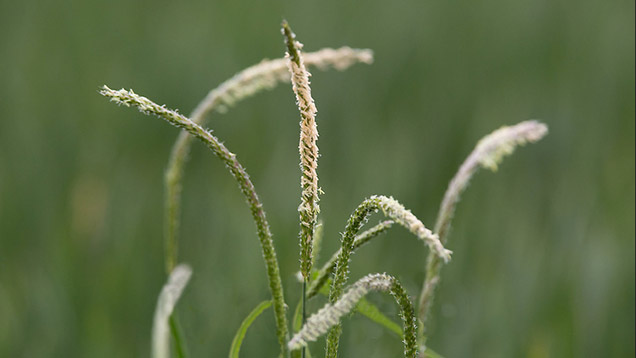Resistant blackgrass forces cut in winter wheat area
 © Tim Scrivener
© Tim Scrivener Herbicide-resistant blackgrass is forcing one big farm management group to cut its area of winter wheat and turn to spring cropping to prevent profit margins eroding.
Jock Willmott, partner at Strutt & Parker, says hikes in herbicide costs and the need to spray more often has led to tough decisions being made on one heavy land farm he manages.
This farm has confirmed resistant blackgrass and the crop rotation has been altered, sacrificing some of the winter wheat area for spring barley and spring beans.
“Chemistry has become more expensive and we are finding we have to use much more of it. We are stacking residual chemistry and this is not sustainable,” he says.
See also: Drain away your blackgrass problems with effective land management
Blackgrass control
- Spring cropping can give 88% blackgrass control
- A grass ley can cut blackgrass seed populations by 70-80% per year, with less than 10% of seeds likely to remain after more than two years.
As only 12 blackgrass plants/sq m can shrink yields by about 5%, and with milling wheat prices falling below £120/t, few can ignore such an assault on the farm accounts.
“We are naturally correcting our cropping in response to increasing numbers of herbicide-resistant weeds with a slight increase in spring beans and we have been growing spring barley since 2012,” he adds.
The wheat area has come down despite it still being the most profitable crop. “We would like to grow lots of wheat, but we have no other choice now – we cannot carry on doing this, because it will destroy yields,” he says.
The cost of controlling resistant blackgrass on this case study farm has ballooned from £65/ha in 2006 to £134/ha in 2015 in wheat, and from £72/ha to £103/ha in oilseed rape.
Mr Willmott says these blackgrass control measures put costs up by 6% and costs the business an extra £52/ha over the wheat and oilseed rape area.
“We cannot let resistant weeds beat us.”
Jock Willmott, Strutt & Parker
“Put simply, we are growing 85% of the wheat and rapeseed we grew in 2007, but the weed control is costing £34,200 more,” he says.
“This all means we are drilling later in a smaller time window, so we need more resources to do it all. It adds extra costs such as more machinery and taking on an extra member of staff to help us cope with the workload,” he says.
Deciding what and when to drill will be a big decision for growers in the future because of limited herbicide options, and the stakes will be high if they get it wrong.
“I think ultimately we are heading for a time where we have to get clever with spring cropping, but we may all have to accept the need to park a field for 12-18 months and try to get that land back into viable production,” adds Mr Willmott.
“We cannot let resistant weeds beat us and we must be innovative about it. To make real headway it requires a plan and the determination to see it through,” he adds.
Mr Willmott was speaking at the British Crop Production Council’s annual weed review at Rothamsted Research’s headquarters in Harpenden last week.

